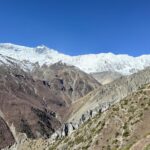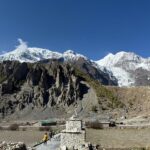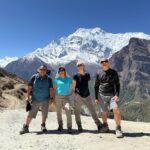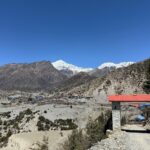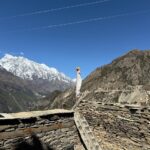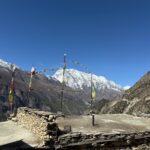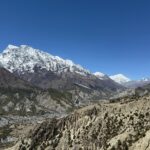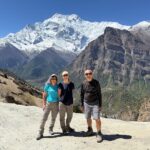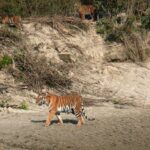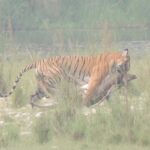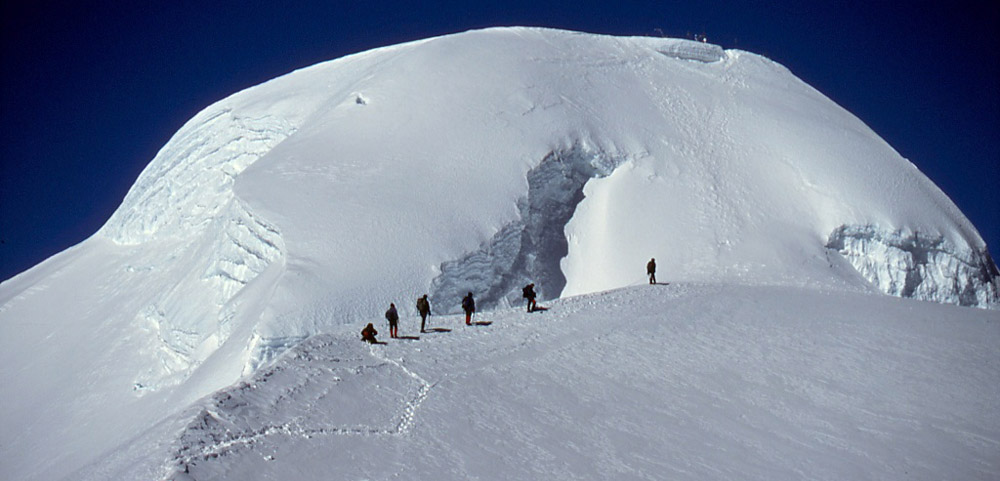
Peak Climbing in Nepal
Peak climbing in Nepal offers an exciting and fulfilling adventure that draws mountaineers and thrill-seekers from all corners of the globe. Situated in the heart of the Himalayas, Nepal boasts some of the most awe-inspiring and demanding peaks in the world. From the famous Everest to lesser-known but equally captivating summits, Nepal’s mountains present a wide range of opportunities for climbers. Whether you’re a seasoned climber or just starting out, you will find something suited to your skill level in Nepal’s diverse mountain range. Peak climbing in Nepal provides a thrilling physical challenge while allowing adventurers to fully immerse themselves in the captivating cultural and natural wonders of this breathtaking region.
Peak climbing tourism in Nepal has experienced tremendous growth, establishing itself as a vital component of the country’s travel industry. The irresistible charm of the Himalayas, combined with Nepal’s warm hospitality and excellent trekking and climbing infrastructure, makes it a perfect destination for climbers. Peaks like Mera Peak, Island Peak, and Lobuche East, classified as “trekking peaks” by the Nepal Mountaineering Association, offer less technically challenging climbs suitable for both beginners and experienced mountaineers. These peaks serve as stepping stones for those who aspire to conquer more formidable mountains such as Everest and Kanchenjunga.
Peak climbing tourism in Nepal significantly impacts the economy. This activity provides essential financial support to local communities by creating jobs for guides, porters, and hospitality staff. Additionally, it generates revenue through the sale of permits and gear rentals. Peak climbing also fosters a greater understanding and respect for the environment while supporting regional conservation efforts. Climbers frequently interact with local cultures, gaining valuable insights into the rich traditions and unique lifestyles of the Himalayan people. This cultural exchange enhances the overall experience and promotes a sense of global community.
Peak climbing in Nepal not only offers adventure and economic benefits but also plays a significant role in personal development. Climbers face demanding physical and mental obstacles that push their limits and require endurance, resilience, and problem-solving abilities. Reaching a summit brings an unparalleled sense of accomplishment, leaving climbers with a profound feeling of achievement and a fresh outlook on life. For those seeking an exhilarating challenge or a tranquil escape amidst Nepal’s stunning scenery, peak climbing in Nepal offers an extraordinary experience that seamlessly blends adventure, cultural immersion, and the sheer splendor of one of the most awe-inspiring regions on Earth.
What is peak climbing in Nepal?
When it comes to climbing in Nepal, you’ll have the opportunity to conquer a variety of mountains, with elevations typically ranging from 5,000 to 7,000 meters (16,400 to 22,965 feet). This thrilling adventure combines the excitement of trekking with the exhilaration of mountaineering, offering climbers a truly gratifying and demanding journey. You’ll discover the breathtaking peaks of Nepal’s majestic Himalayas, including Mera Peak, Island Peak, and Lobuche East. These awe-inspiring summits provide a thrilling mountaineering experience that is less technically demanding than the renowned Everest, yet still requires basic skills.
Peak climbing in Nepal goes beyond the physical challenge, offering a rich cultural and natural experience. You’ll venture through diverse terrains, from vibrant valleys to snowy peaks, immersing yourself in the local cultures and customs you encounter. Nepal’s warm hospitality and well-established trekking infrastructure enhance the overall experience, ensuring accessibility and enjoyment for climbers of all levels, from beginners to experts. In Nepal, peak climbing offers an exhilarating adventure that seamlessly blends the excitement of reaching the summit with the vibrant cultural heritage of the area.
Why peak climbing is popular in Nepal?
Peak climbing in Nepal attracts adventurers with its breathtaking natural landscapes, abundant climbing options, and immersive cultural encounters. The majestic Himalayas in Nepal boast an impressive collection of peaks, including eight of the world’s highest fourteen. These mountains offer diverse challenges for climbers of varying expertise. Whether you’re a seasoned mountaineer or a beginner looking for a thrilling climb, you can choose from a range of peaks, from the renowned Everest to the more approachable Mera and Island Peak.
One of the main appeals of peak climbing in Nepal is the opportunity to fully immerse yourself in the local culture. As you embark on your adventure, you traverse secluded villages, verdant valleys, and challenging high-altitude terrains. Along the way, you engage with warm-hearted local communities, experiencing their rich traditions and gracious hospitality. This cultural immersion enhances the physical challenge, making the adventure more rewarding.
Additionally, Nepal’s highly developed trekking and climbing infrastructure ensures a secure and enjoyable experience. The support from the Nepal Mountaineering Association and local trekking agencies, combined with the warm hospitality of the Nepalese people, greatly enhances the accessibility and memorability of peak climbing, contributing to its widespread popularity.
How expensive is peak climbing in Nepal
The cost of peak climbing in Nepal can vary greatly, depending on various factors including the chosen peak, the duration of the climb, and the level of support and services needed. Generally, expenses range between $2,000 and $8,000 per person. Opting for more accessible peaks like Island Peak or Mera Peak tends to be economical, falling towards the lower end of this spectrum.
The expenses typically cover permits, fees for guides, porters, lodging, and meals throughout the trek. Conversely, ascending more challenging and higher-altitude peaks such as Mount Everest or Ama Dablam escalates expenses, often exceeding $20,000 due to elevated permit fees, extensive logistical support needs, and additional gear requirements.
Additional expenditures include international airfare, travel insurance, personal equipment, and gratuities for guides and porters. Despite the financial investment, peak climbing in Nepal promises an unmatched and enriching adventure, blending awe-inspiring landscapes with immersive cultural experiences.
The best time for peak climbing in Nepal
The best time for peak climbing in Nepal is during the pre-monsoon (spring) and post-monsoon (autumn) seasons. Spring, from March to May, offers climbers stable weather conditions, with warmer temperatures and blooming rhododendrons enhancing the scenic beauty. This season is ideal for climbing due to favorable snow and ice conditions and longer daylight hours.
Autumn, typically from late September to November, is also excellent for climbers seeking adventure. The weather during this time is clear and dry, providing excellent visibility and stable conditions. The post-monsoon period offers a refreshing atmosphere and stunning views of the Himalayan peaks. Cooler temperatures in autumn reduce the risk of heat-related issues, making it perfect for high-altitude climbs and ensuring a comfortable experience for climbers.
Spring and autumn are the peak seasons for climbing in Nepal, attracting a large number of climbers due to their reliable weather conditions. These seasons provide the best opportunities to undertake challenging ascents amidst Nepal’s awe-inspiring landscapes.
The most popular peaks in Nepal for peak climbing adventure
Some of the most popular peaks in Nepal for peak climbing adventures include:
Island Peak (Imja Tse): Situated in the Everest region, Island Peak stands at 6,189 meters (20,305 feet) and is renowned for its challenging ascent and stunning views of neighboring peaks like Lhotse and Ama Dablam. It’s a popular choice for climbers seeking to enhance their mountaineering skills.
Mera Peak: Located in the Khumbu region, Mera Peak rises to 6,476 meters (21,247 feet) and offers panoramic views of five of the world’s six highest peaks. It’s considered one of the highest trekking peaks in Nepal and attracts climbers looking for a less technical but physically demanding ascent.
Lobuche East: Found near the Everest Base Camp, Lobuche East (6,119 meters / 20,075 feet) provides a challenging climb with breathtaking views of Everest, Lhotse, Nuptse, and other surrounding peaks. It’s a preferred choice for climbers looking to combine a trek to Everest Base Camp with a summit climb.
Pisang Peak: Located in the Annapurna region, Pisang Peak stands at 6,091 meters (19,983 feet) and offers a rewarding climb with stunning views of the Annapurna range, including Annapurna II and IV, Gangapurna, and Tilicho Peak.
Yala Peak: Situated in the Langtang region, Yala Peak reaches 5,520 meters (18,110 feet) and is known for its accessibility and beautiful views of the Langtang Lirung and other peaks in the Langtang range. It’s a popular choice for climbers looking for a less technical climb with a shorter duration.
These peaks are favored for their combination of stunning Himalayan views, manageable technical difficulty, and cultural immersion opportunities, making them ideal destinations for climbers seeking diverse and rewarding peak climbing adventures in Nepal.

